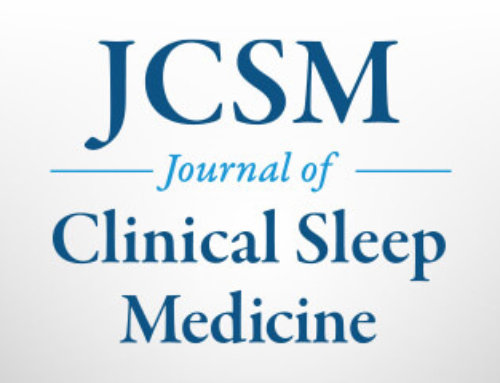EMBARGOED FOR RELEASE
June 12, 2008, at 12:01 a.m.
CONTACT:
Kathleen McCann
(708) 492-0930, ext. 9316
WESTCHESTER, Ill. – In the first study to use continuous measurements of blood pressure during overnight sleep, a research abstract that will be presented on Thursday at SLEEP 2008, the 22nd Annual Meeting of the Associated Professional Sleep Societies (APSS) finds that all severities of sleep-related breathing disorders (SRBD) in children are associated with elevated blood pressure during sleep compared with non-snoring control children.
The study, authored by Rosemary Horne, PhD, of Monash University in Melbourne, Australia, focused on 88 children between seven and 13 years of age, including 68 referred for the assessment of SRBD and 20 non-snoring controls. Routine polysomnography, or an overnight sleep test, was performed, and mean arterial pressure was continuously recorded. Children were divided into groups according to obstructive apnea/hypopnea index: control children, primary snoring, mild obstructive sleep apnea (OSA) and moderate/severe OSA.
According to the results, compared with the non-snoring controls, SRBDs of any severity elevate the blood pressure of children during sleep.
“SRBDs are very common in children, occurring in up to 30 percent of children. SRBD ranges in severity from primary snoring to OSA. In adults, SRBD is associated with hypertension and increased risk for cardiovascular disease. These findings highlight the importance of considering the long-term cardiovascular effects of any severity of SRBD in children,” said Dr. Horne.
Snoring is a sound made in the upper airway of your throat as you sleep. It normally occurs as you breathe in air. It is a sign that your airway is being partially blocked. The sound is made as the flow of air causes tissue in the back of your throat to vibrate. The sound can come through the nose, the mouth, or both the nose and mouth. The rate of snoring in children is reported to be 10 to 12 percent.
OSA is an SRBD that causes your body to stop breathing during sleep. OSA occurs when the tissue in the back of the throat collapses and blocks the airway. This keeps air from getting into the lungs. OSA occurs in about two percent of young children. It can develop in children at any age, but it is most common in pre-schoolers. OSA often occurs between the ages of three and six years when the tonsils and adenoids are large compared to the throat. OSA appears to occur at the same rate in young boys and girls. OSA also is common in children who are obese, and is more likely to occur in a child who has a family member with OSA.
It is recommended that school-aged children get between 10-11 hours of nightly sleep and children in pre-school between 11-13 hours.
The American Academy of Sleep Medicine (AASM) offers some tips to help your child sleep better:
- Follow a consistent bedtime routine. Set aside 10 to 30 minutes to get your child ready to go to sleep each night.
- Establish a relaxing setting at bedtime.
- Interact with your child at bedtime. Don’t let the TV, computer or video games take your place.
- Keep your children from TV programs, movies, and video games that are not right for their age.
- Do not let your child fall asleep while being held, rocked, fed a bottle, or while nursing.
- At bedtime, do not allow your child to have foods or drinks that contain caffeine. This includes chocolate and sodas. Try not to give him or her any medicine that has a stimulant at bedtime. This includes cough medicines and decongestants.
It is important to make sure that your child gets enough sleep and sleeps well. The value of sleep can be measured by your child’s smiling face, happy nature and natural energy. A tired child may have development or behavior problems. A child’s sleep problems can also cause unnecessary stress for you and the other members of your family.
Parents who suspect that their child might be suffering from a sleep disorder are encouraged to consult with their child’s pediatrician or a sleep specialist.
More information about “children and sleep” is available from the AASM at https://www.SleepEducation.com/Topic.aspx?id=8, snoring at https://www.SleepEducation.com/Disorder.aspx?id=26 and child OSA at https://www.SleepEducation.com/Disorder.aspx?id=71.
The annual SLEEP meeting brings together an international body of 5,000 leading researchers and clinicians in the field of sleep medicine to present and discuss new findings and medical developments related to sleep and sleep disorders.
More than 1,150 research abstracts will be presented at the SLEEP meeting, a joint venture of the AASM and the Sleep Research Society. The three-and-a-half-day scientific meeting will bring to light new findings that enhance the understanding of the processes of sleep and aid the diagnosis and treatment of sleep disorders such as insomnia, narcolepsy and sleep apnea.
SleepEducation.com, a patient education Web site created by the AASM, provides information about various sleep disorders, the forms of treatment available, recent news on the topic of sleep, sleep studies that have been conducted and a listing of sleep facilities.
Abstract Title: Sleep Disordered Breathing of Any Severity Affects Blood Pressure during Sleep in Primary School Children
Presentation Date: Thursday, June 12
Category: Pediatrics
Abstract ID: 0187
# # #




